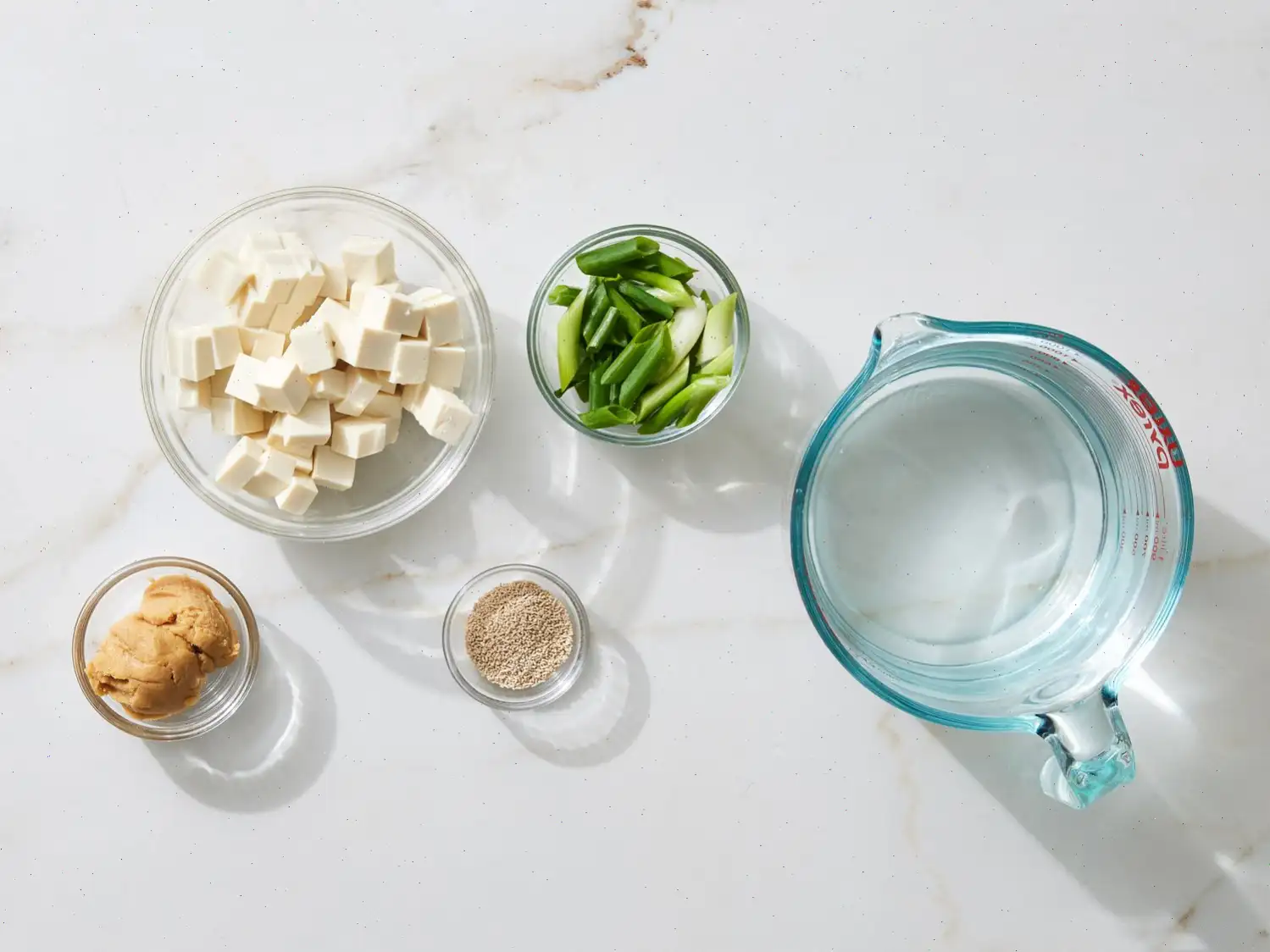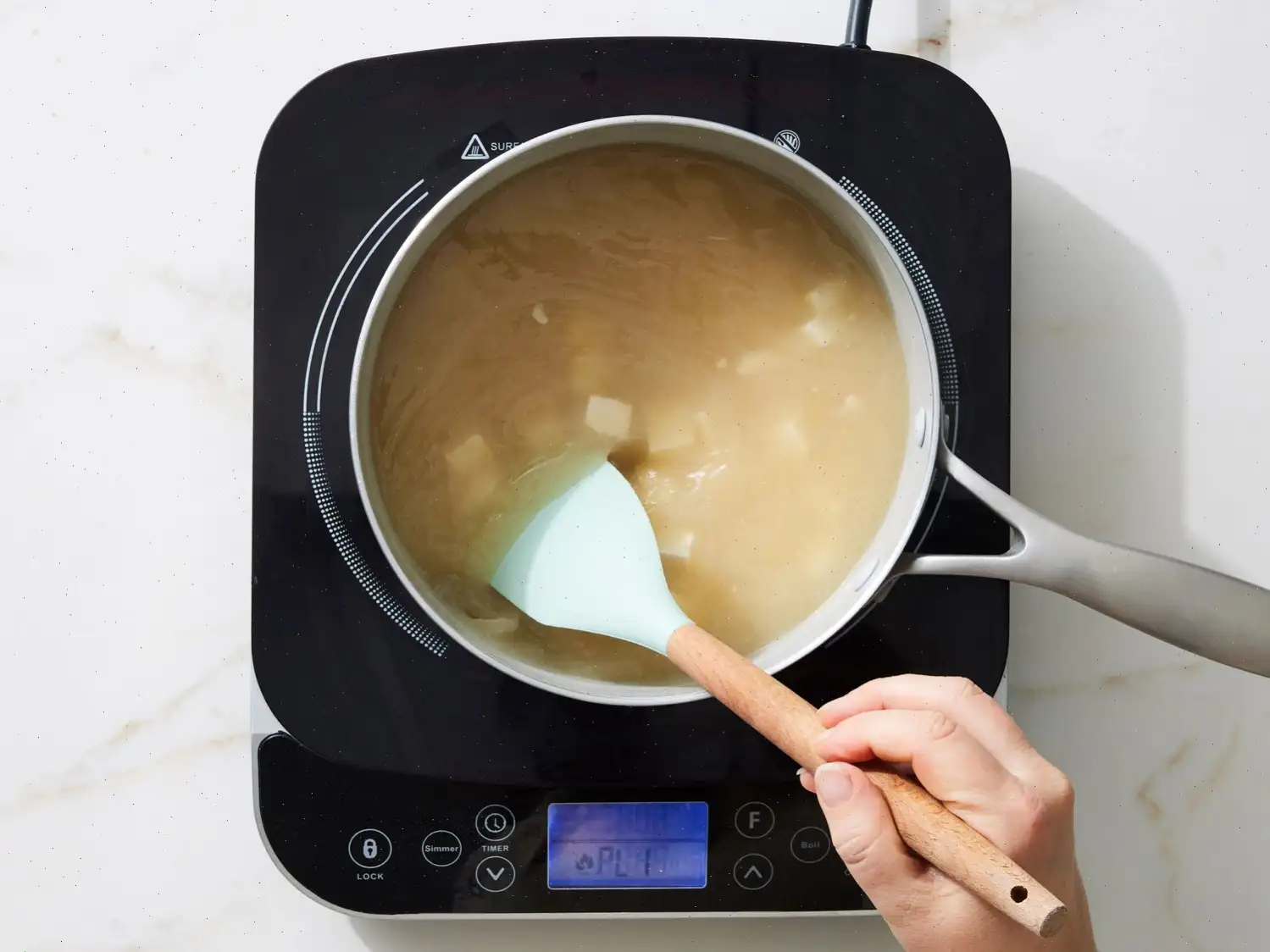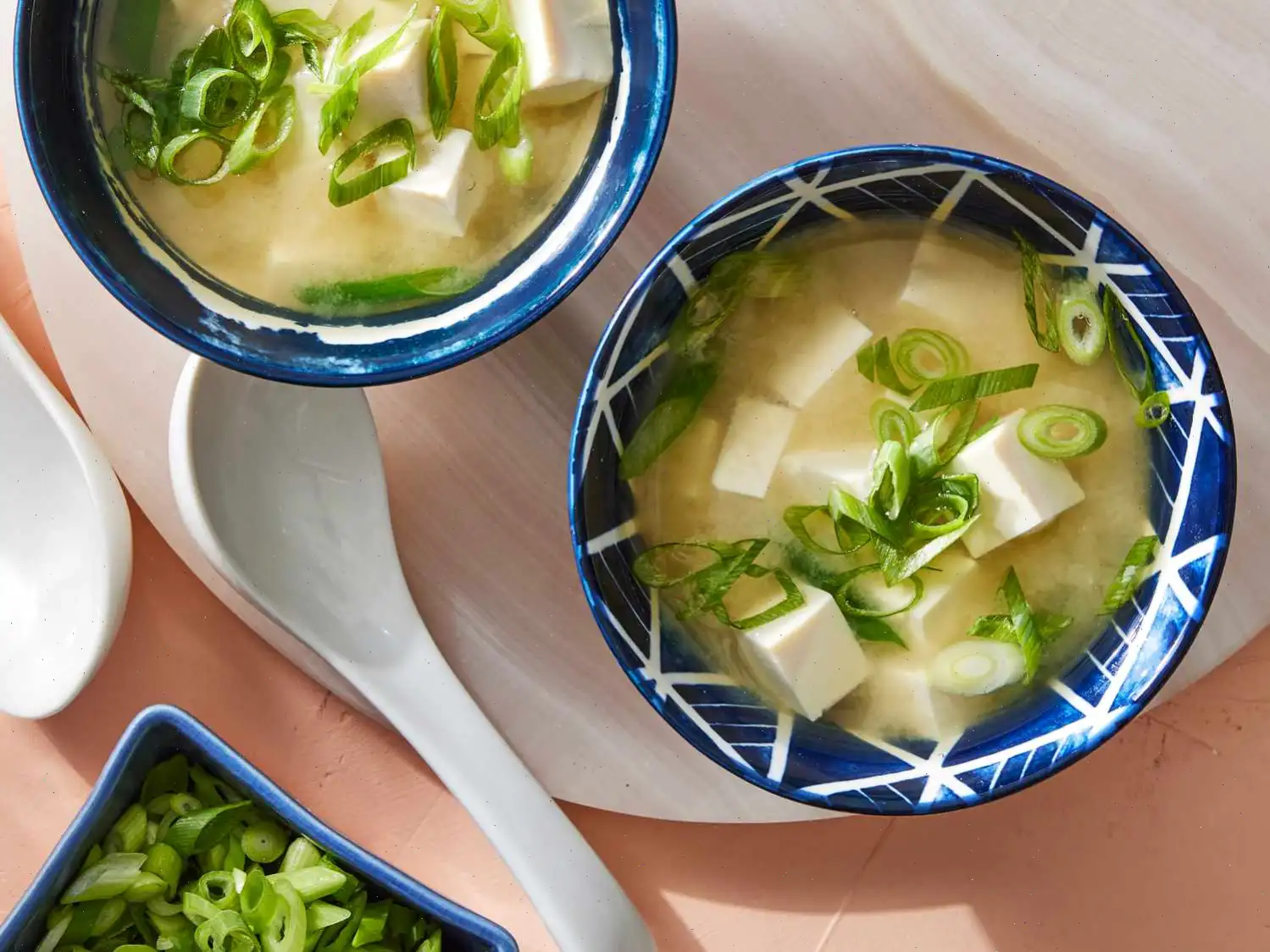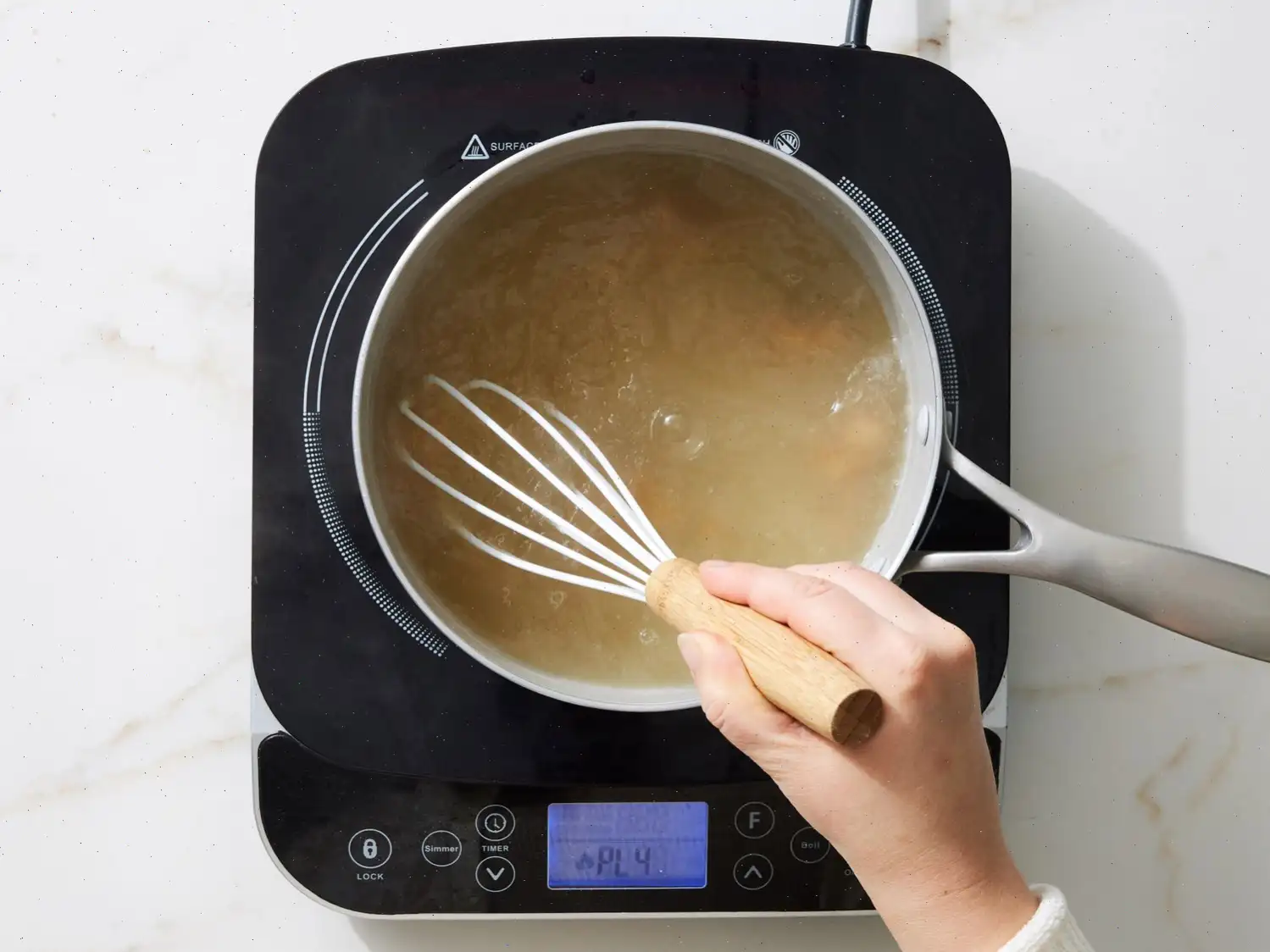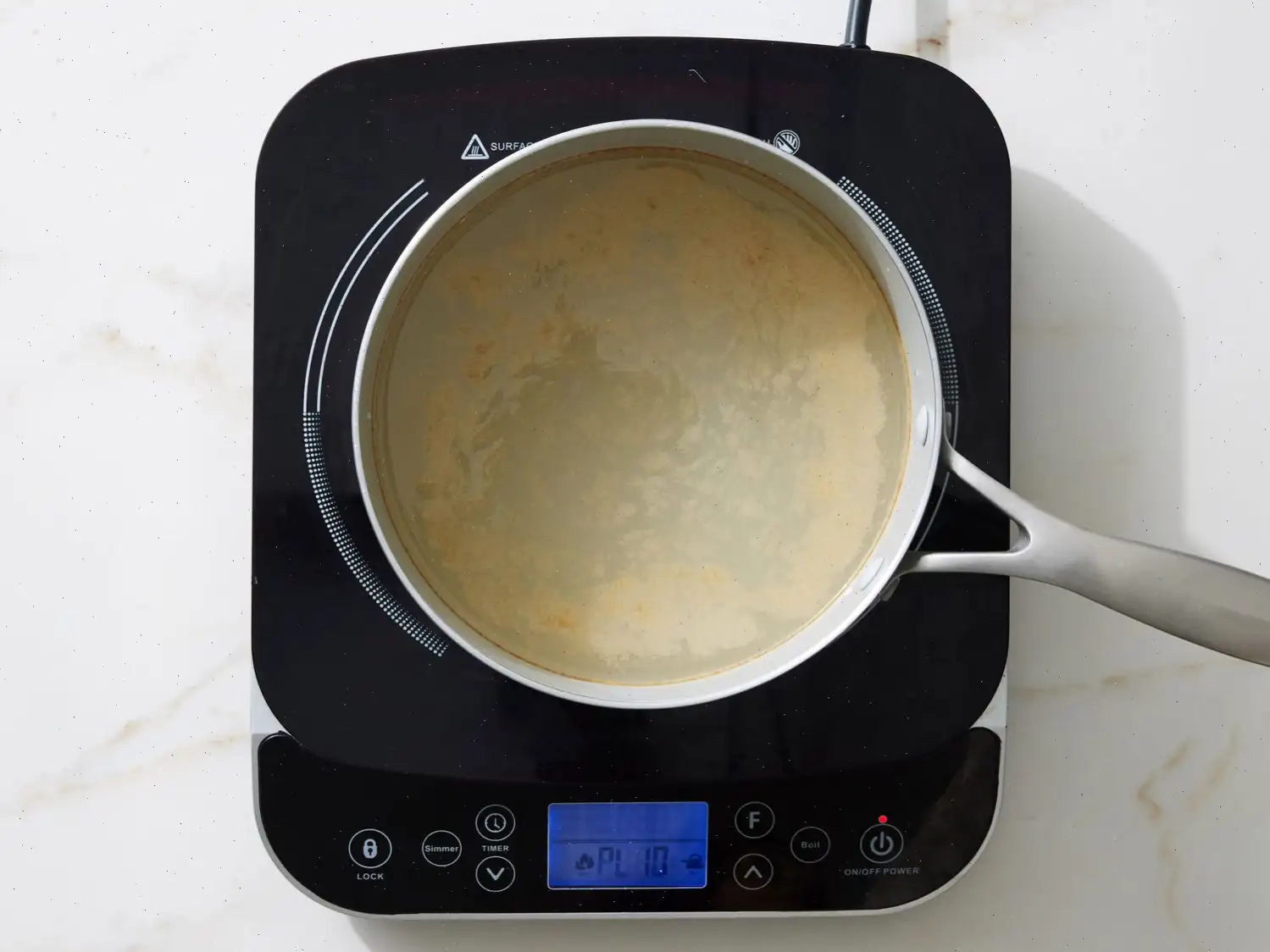
Miso Soup - How to Make Miso Soup Recipe
Miso Soup Recipe
Original recipe yields 4 servings
Ingredients:
- 4 cups water
- 2 teaspoons dashi granules
- 3 tablespoons miso paste
- 1 (8 ounce) package silken tofu, diced
- 2 green onions, sliced diagonally into 1/2 inch pieces
Directions:
- Gather all the ingredients before you begin cooking.
- In a medium saucepan, combine water and dashi granules. Place over medium-high heat and bring the mixture to a boil.
- Once the mixture reaches a boil, reduce the heat to medium and whisk in the miso paste until it is fully dissolved.
- Next, stir in the diced silken tofu and allow it to heat through in the soup.
- Carefully separate the layers of the green onions and add them to the soup. Stir gently.
- Simmer the soup for an additional 2 to 3 minutes, allowing the flavors to meld and the onions to soften.
- Serve hot and enjoy your delicious miso soup!
Recipe Tips:
Dashi is a traditional Japanese stock made from boiling dried kelp (seaweed) and dried bonito (fish). Instant dashi granules are available in various strengths and are an easy substitute for making homemade dashi.
Consider serving the miso soup alongside a bowl of rice for a complete meal.
Nutrition Facts (per serving):
| Nutrient | Amount |
|---|---|
| Calories | 63 |
| Total Fat | 2g |
| Saturated Fat | 0g |
| Sodium | 513mg |
| Total Carbohydrate | 5g |
| Dietary Fiber | 1g |
| Total Sugars | 2g |
| Protein | 6g |
| Vitamin C | 1mg |
| Calcium | 38mg |
| Iron | 1mg |
| Potassium | 159mg |
* Percent Daily Values are based on a 2,000 calorie diet. Your daily values may be higher or lower depending on your calorie needs.
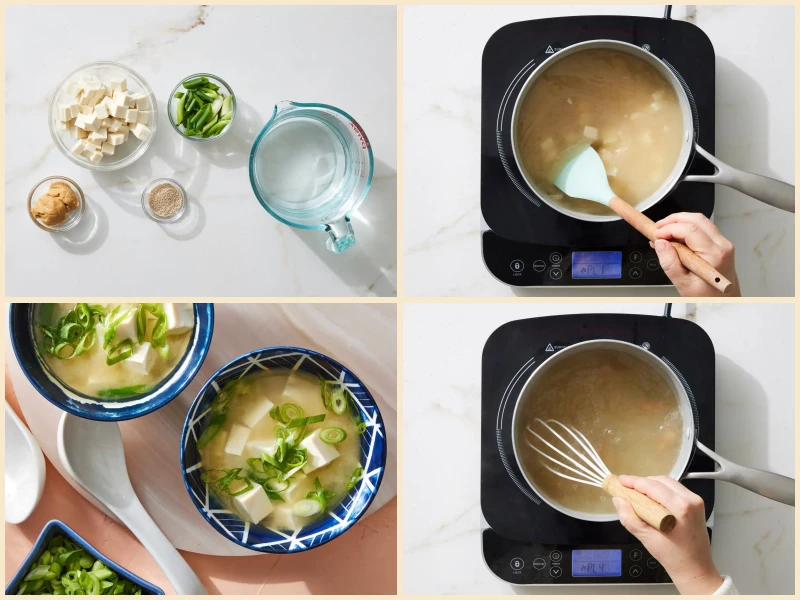
Miso soup is a traditional Japanese dish that has been enjoyed for centuries. It is made from a broth known as "dashi," which is then flavored with miso paste, and often complemented by tofu, seaweed, and green onions. The origins of miso soup date back to the 8th century during the Nara period in Japan, where it was initially made with fermented soybeans. Over time, miso soup evolved to include various regional ingredients and became a staple of Japanese cuisine.
Regional Variations
While miso soup is universally enjoyed in Japan, there are regional variations that highlight local tastes and available ingredients. For example, in the Kanto region (which includes Tokyo), miso soup tends to be made with a lighter, white miso paste. In contrast, the Kansai region (including Osaka and Kyoto) is known for its use of red miso, which has a richer and more intense flavor. The type of dashi used can also varysome regions prefer bonito-based dashi, while others may use kombu (kelp) or a combination of both. Vegetables like daikon radish, mushrooms, and leafy greens are common additions in different parts of Japan.
How Miso Soup Differs from Similar Dishes
Miso soup is often compared to other Asian soups, such as Chinese hot and sour soup or Korean kimchi jjigae. However, what sets miso soup apart is its base, which is not just broth but a fermented paste that provides a distinct umami flavor. The addition of dashi (a stock made from bonito flakes and kelp) also contributes to the deep, savory taste that is unique to miso soup. While other Asian soups might feature bold and spicy flavors, miso soup is milder but still rich in taste, with a balance of saltiness from the miso and a delicate broth.
Where Miso Soup is Typically Served
In Japan, miso soup is a common part of any meal, often served as a side dish alongside rice and pickles. It is typically found in the traditional Japanese breakfast, which may also include grilled fish, rice, and fermented vegetables. Miso soup is also commonly served at lunch and dinner, particularly in set meals called "teishoku," and it is often found as a starter in sushi restaurants. While it is most closely associated with Japanese cuisine, it has gained popularity worldwide, especially in restaurants offering Japanese or fusion dishes.
Interesting Facts about Miso Soup
- In Japan, miso soup is often made at home and can vary greatly depending on the familys preferences and regional influences.
- Miso is a fermented food, which means it contains probiotics that can aid in digestion and support gut health.
- In Japan, it is considered bad luck to boil the miso paste when preparing the soup, as it is believed to cause the aroma of the miso to dissipate, resulting in a less flavorful dish.
- In addition to tofu and seaweed, various other ingredients can be added to miso soup, such as mushrooms, fish, and vegetables, making it a versatile and customizable dish.
- Traditionally, miso soup is served in small, individual bowls, but it is not uncommon to see larger communal bowls for family-style meals.
You can listen to this recipe in AI audio format. Simply click the play button below to listen to the content in a format that suits you best. It’s a great way to absorb information on the go!
FAQ about Miso Soup - How to Make Miso Soup Recipe
Comments
Nancy Meister Slade
10/06/2025 01:52:54 PM
Honest - this is the real thing. The secret is the Dashi granules. I'm a teacher and had a Japanese student bring me the box his mom used to make their miso soup. Had to go to a Japanese market to get it - but it was worth it. They do sell miso with dashi flavoring - which I used. I used soft tofu, and added some sliced ginger while heating the soup. It was just like my local restaurant - and I'm so glad I can make it cheaper than the $1.50 they charge for a small bowl. Will fix it often! Miso is supposed to be very healthy. High sodium, though. The market sold low-sodium miso - may try that when I'm out of the current one.
OkinawanPrincess
09/10/2011 10:25:06 PM
I grew up eating miso soup made various ways. This is a good basic miso soup. I always use Shiro Miso, which is a white miso (less salty) than the Aka Miso, red miso paste. Some people also like to mix both for more bolder flavor. To whisk in the miso paste, I normally hold two spoons, with the miso paste in the first spoon and using the other spoon to mash the paste into the water. The dashi I use has no MSG and since I was only serving two people I scaled this amonunt down quite a bit. I don't use silken tofu but medium firm which is a personal choice. I garnished the soup with thinly minced green onions (see my picture). Miso soup doesn't take me too long to make. There are so many vegetables you can add in miso soup such as shiitake mushroom, daikon, other mushrooms, leafy greens, etc. This was a warm and satisfying soup that paired perfectly with, "Japanese Deep Fried Shrimp," "Japanese Shrimp Sauce I," "Japanese-Style Sesame Green Beans,"and "Cucumber Sunomono," all from this website. I drank every last drop of miso soup!
Joannzzz
07/29/2012 07:36:57 PM
I studied in Japan as a college student, and this is pretty much how I learned to make miso soup from friends in Japan. Just a few notes: Miso: I was taught to mix the miso in a small bowl with a bit of the broth to dissolve it before adding it to the pot. Otherwise it's harder to incorporate it into the soup. If your miso has chunks that won't dissolve, you can put this small bowlful through a sieve before adding to the pot. Tofu: Generally, softer tofu is used for soups and hard tofu is for dishes like stir fry where it will be stirred or moved around a lot. That's why the recipe calls for what it does. But get what you like. Seaweed: While you're at the Asian grocery store picking up your miso and dashi, grab some wakame seaweed. You just have to reconstitute it by putting a small amount in a bowl of water while you're making the rest of the soup. When the soup is ready, the wakame should be, too. Chop into 2-3" pieces if desired - some bits of wakame may be quite large. Put it into the soup and serve.
Isabelle
08/12/2012 08:32:33 AM
This is the perfect basic recipe. As others have mentioned, adding spinach and mushrooms adds a delicious touch. Oddly, I could not find dashi granules at my local asian market, but the very nice clerk gave me the ingredients (which they had) and very easy instructions to make my own stock which is much lower in sodium and additives: Dried kombu (kelp) and bonito flakes. Soak +/- 1/2 cup of dried kombu in 4 cups cold water for 20 minutes. Bring to a boil, add +/- 1/2 cup of the dried bonito flakes. Simmer 5 minutes. Strain the broth. Voilà!
DianaB
02/08/2019 10:00:00 PM
Based on ingredients on hand and others' reviews and what I had on hand, I used 3.5 T white miso paste, fish (salmon) stock in place of water, 1.5 carrots (shredded), firm tofu, and added chopped mustard greens before serving. My husband loved it and children ate it without complaint. Will definitely make again. ** We've made this recipe multiple times. Sometimes we add water, other times fish stock. We always add shredded carrot and greens.
DerChef
05/30/2013 05:26:21 PM
This is an amazing recipe! Tastes better than all of the local Asian restaurants, in my opinion. I doubled the recipe and added extra firm Tofu, sliced Portabella Mushrooms, Roasted Seaweed, and Green Onions (added in that exact order with aprox 5 minutes between each addition)... I also added a little extra miso paste (white) for extra flavor. I was very pleased, as was my significant other... Very delicious, I highly recommend you give this a shot if you like Miso Soup!
France Cevallos
04/13/2014 04:23:38 PM
Just like you'd get in a Japanese restaurant! I had to go to the Asian market to get the dashi granules (important, don't omit!) and miso paste. I used Marikome brand All Natural Miso. This miso is known as Awase which is between a white and a red paste on the miso scale. The only change I made was to use a firm tofu, as recommended by other reviewers. I think using firm is necessary. I thinly slice a sheet of seaweed and added that into the pot just before serving. I also added a couple thinly sliced mushrooms as a garnish. Thanks for the great recipe! So simple! Who knew!?
Allrecipes Member
07/14/2025 06:39:23 AM
I am Japanese. When I make miso soup, I add the miso at the end. I never boil it. The aroma of the miso will be weak. 1. Bring the water to a boil, 2. Add the vegetables and simmer until they are soft, 3. Turn off the heat and add the miso (when heating, use low heat and do not let it boil!). This way of making it is very delicious.
Stixmodee
01/09/2014 01:10:08 PM
After adding the Dashi, I tasted the Miso paste before adding. It was low sodium, but still a bit salty. I only used 2 Tbs. Miso and it was enough. I added about a 1/2 cup of tofu and a 1/2 cup seaweed cut in about 1/2 in pieces along with the onion. This was delicious and light. Make sure you soak and rinse the seaweed if you use it. Made it again with thinly sliced celery and bamboo shoots, in addition to the green onion. I cut all of my ingredients thinly to keep the soup light and brothy. So simple, but made me look like I might actually know what I'm doing! lol Thanks Michelle Chen.
BIANKAT
01/21/2014 09:50:10 AM
Common way of making Miso using granules. A couple of notes from my own experience...I use 1T miso for every cup of dashi (i.e. the broth). This makes it easier for me to remember the ratio. When using silken tofu, look for the Extra Firm Silken Tofu. You want that restaurant quality creamy tofu experience but you also want the block to hold up. Extra Firm Silken does this. Finally, I add a bit of rehydrated wakame (seaweed) as well. A little wakame goes a long way as it expands greatly. Rehydrate with boiling water in a separate vessel, drain, and add to the end soup.
Dawn Clark
08/10/2016 11:14:24 PM
This was an excellent and easy recipe for a novice miso soup maker. I tweaked it right out of the chute, because I had been scoping similar recipes. I put a little more miso in it (used white) and added a shredded carrot and some diced mushrooms. It is EXCELLENT. "Expert" Japanese chef suggested removing the soup from the heat before adding the miso. It's supposed to maintain the flavor better and keep it from separating. All I know is that I made a little batch of heaven today!
ZippySage1605
07/17/2025 05:16:46 PM
This recipe is missing the Cut Wakame (dried seaweed). I added that and used 1 of the the Dashi bags. These changes and it comes out perfect.
PuffyThyme6823
03/13/2025 03:24:20 PM
Easier to make than instant noodles! I love miso soup but the pre made packages are so expensive so I looked up a recipe and tried this one. Thank you to the author and all the commenters who helped me figure out what to buy and for the tips and tricks!
FlimsyJelly7131
02/14/2025 09:01:42 PM
This recipe was so easy and so delicious! i added a little bit of wakame seaweed and a dash of sesame oil to mine and it turned out incredible!
Steven Bulin
02/11/2025 08:45:05 PM
I used a dashi packet. It has kelp and whole dried fish in it. I also added some mushrooms. The onion isn't onion, and I forget the name of it - it's like a small leek, but more tender.
Brenda Taylor
01/29/2025 02:14:39 AM
Delicious and so easy to clean up.
crushedimages
01/20/2025 09:50:10 AM
YUM YUM eat 'em up!
SP
12/21/2024 10:08:28 PM
Easy recipe to follow. Tastes just like what we order at our favorite Sushi restaurant. Will be making this again and add spinach.
SnazzyWheat6320
10/01/2024 02:28:37 PM
Brilliant recipe. No messing about great results every time
Bridget Ton
08/30/2024 07:02:53 PM
I’m added some thinly sliced mushrooms and some spinach! Family loved it!


